 Google Cloud Run Task Runner
Google Cloud Run Task Runner
Available on: >= 0.18.0
Run tasks as containers on Google Cloud Run.
How to use the Google Cloud Run task runner
The Google Cloud Run task runner deploys the container for each task to Google Cloud Run.
How the Google Cloud Run task runner works
To use the inputFiles, outputFiles, or namespaceFiles properties, you must set the bucket property. The bucket acts as an intermediary storage layer for the task runner:
- Input and namespace files are uploaded to the Cloud Storage bucket before the task runs.
- Output files are stored in the same bucket and made available for download and preview in the Kestra UI after execution.
To help track where files are stored, the task runner creates a unique folder for each run. You can access this folder using the {{ bucketPath }} Pebble expression or the BUCKET_PATH environment variable.
Because Cloud Run environments are ephemeral, tasks run in the root directory instead of the working directory. Therefore, use the {{ workingDir }} Pebble expression or the WORKING_DIR environment variable to access your input or namespace files.
Note on termination behavior
- If the Kestra Worker running this task is terminated, the Cloud Run job continues to run until completion. This prevents interruptions due to Worker crashes.
- If you manually stop the execution from the UI, the Cloud Run job is terminated to avoid unnecessary costs.
(This behavior is under development; you can track progress on GitHub).
Example flows
Basic example
The following example runs a simple shell command inside a Cloud Run container:
id: new-shell
namespace: company.team
variables:
projectId: myProjectId
region: europe-west2
tasks:
- id: shell
type: io.kestra.plugin.scripts.shell.Commands
taskRunner:
type: io.kestra.plugin.ee.gcp.runner.CloudRun
projectId: "{{ vars.projectId }}"
region: "{{ vars.region }}"
serviceAccount: "{{ secret('GOOGLE_SA') }}"
commands:
- echo "Hello World"
Example with file inputs
This flow runs a shell command and demonstrates how to use file inputs and outputs with Cloud Run:
id: new-shell-with-file
namespace: company.team
variables:
projectId: myProjectId
region: europe-west2
inputs:
- id: file
type: FILE
tasks:
- id: shell
type: io.kestra.plugin.scripts.shell.Commands
inputFiles:
data.txt: "{{ inputs.file }}"
outputFiles:
- out.txt
containerImage: centos
taskRunner:
type: io.kestra.plugin.ee.gcp.runner.CloudRun
projectId: "{{ vars.projectId }}"
region: "{{ vars.region }}"
bucket: "{{ vars.bucket }}"
serviceAccount: "{{ secret('GOOGLE_SA') }}"
commands:
- cp {{ workingDir }}/data.txt {{ workingDir }}/out.txt
For a complete list of properties available in the Cloud Run task runner, see the GCP plugin documentation or explore the configuration in the built-in Code Editor in the Kestra UI.
How to run tasks on Google Cloud Run
Before you begin
You’ll need the following:
- A Google Cloud account.
- A Kestra instance (version 0.16.0 or later) with Google credentials stored as secrets or as environment variables.
Google Cloud Console setup
Create a project
If you don’t already have one, create a new project in the Google Cloud Console.
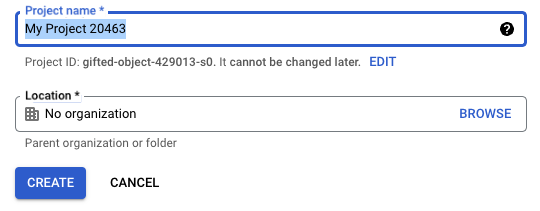
Ensure the new project is selected in the top navigation bar.

Enable the Cloud Run Admin API
Open APIs & Services → Enable APIs and Services, then search for and enable Cloud Run Admin API.

Create a service account
After enabling the API, create a service account to allow Kestra to access Cloud Run resources.
In the search bar, find Service Accounts and select Create Service Account.
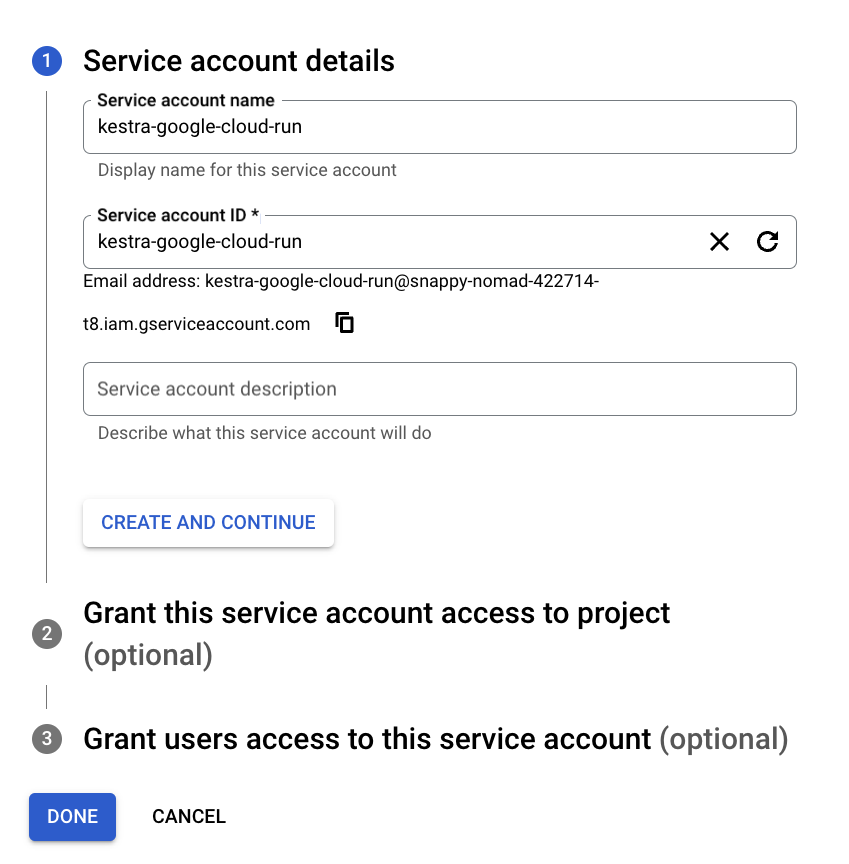
Assign the following roles to the service account:
- Cloud Run Developer
- Logs Viewer
- Storage Admin (required for file upload and download)
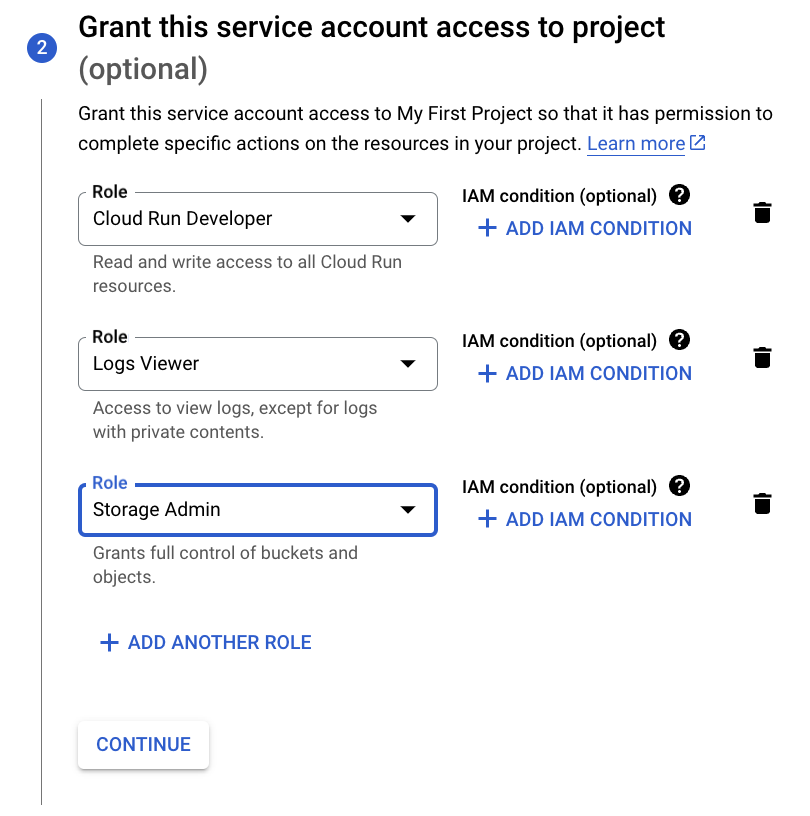
Refer to the Google credentials guide for details on adding the service account to Kestra as a secret.
To grant access to the Compute Engine default service account, go to IAM & Admin → Service Accounts → Permissions → Grant Access, and assign the Service Account User role to your new service account.
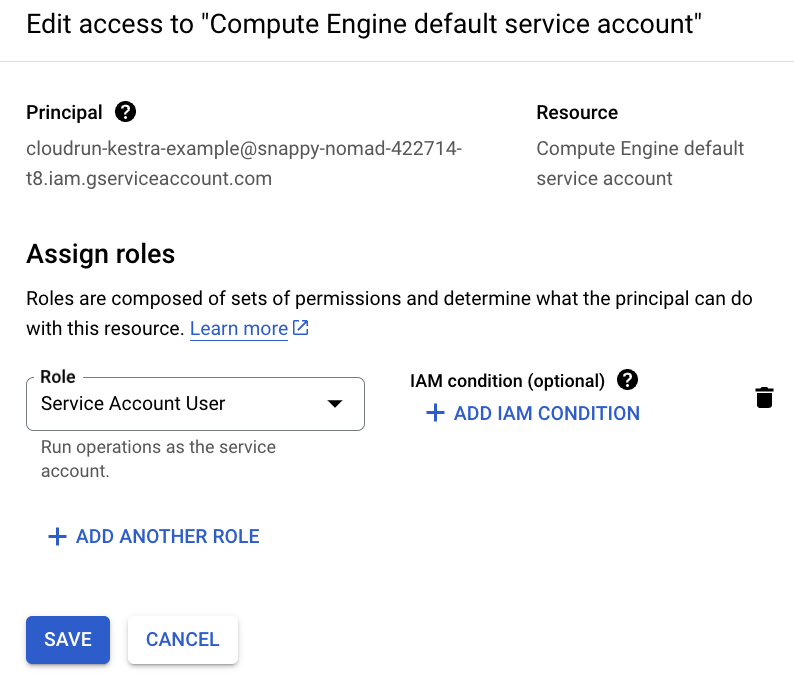
Create a storage bucket
Search for “Bucket” in the Cloud Console and create a new GCS bucket. Use default settings unless otherwise required.
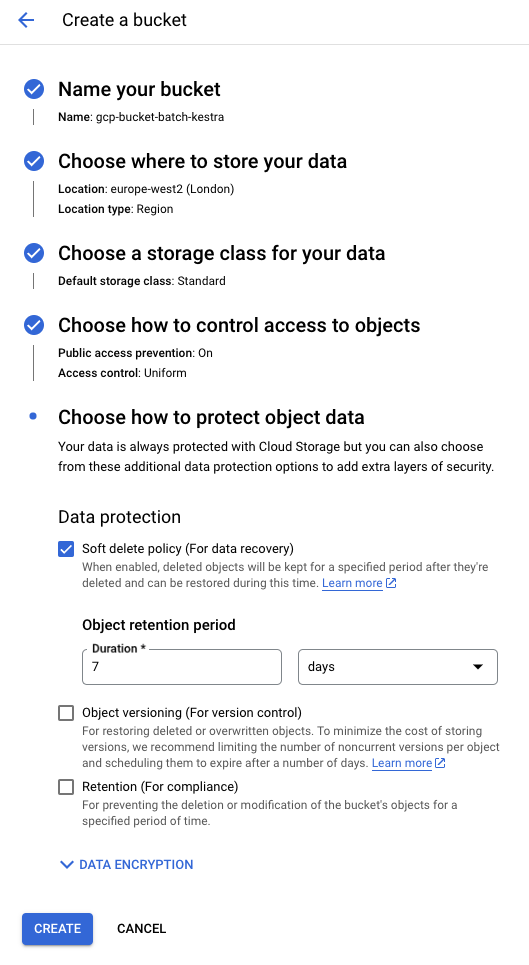
Create a flow
Below is an example flow that runs a shell script using the Google Cloud Run task runner. The task copies a file under a new name.
containerImage: centos
taskRunner:
type: io.kestra.plugin.ee.gcp.runner.CloudRun
projectId: "{{ secret('GCP_PROJECT_ID') }}"
region: "{{ vars.region }}"
bucket: "{{ secret('GCP_BUCKET') }}"
serviceAccount: "{{ secret('GOOGLE_SA') }}"
The containerImage property is required because Cloud Run executes each task as a container. You can use any image from a public or private registry. In this example, we use centos.
Here’s the complete flow:
id: new-shell-with-file
namespace: company.team
variables:
projectId: myProjectId
region: europe-west2
inputs:
- id: file
type: FILE
tasks:
- id: shell
type: io.kestra.plugin.scripts.shell.Commands
inputFiles:
data.txt: "{{ inputs.file }}"
outputFiles:
- out.txt
containerImage: centos
taskRunner:
type: io.kestra.plugin.ee.gcp.runner.CloudRun
projectId: "{{ secret('GCP_PROJECT_ID') }}"
region: "{{ vars.region }}"
bucket: "{{ secret('GCP_BUCKET') }}"
serviceAccount: "{{ secret('GOOGLE_SA') }}"
commands:
- cp {{ workingDir }}/data.txt {{ workingDir }}/out.txt
When you execute the flow, the logs in Kestra confirm the creation of the Cloud Run task runner:
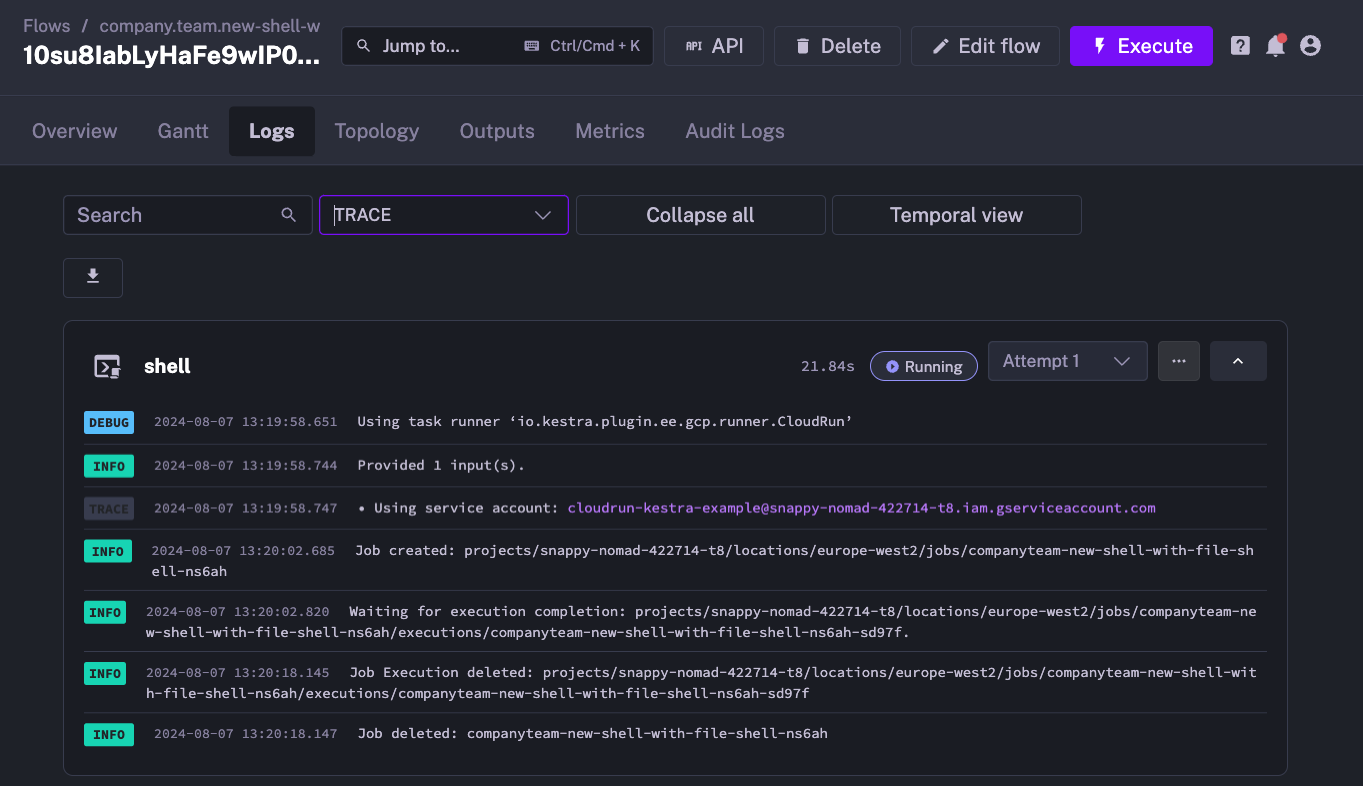
You can also verify job creation in the Google Cloud Console:

Once the task completes, the Cloud Run container is automatically terminated to free up resources.
Was this page helpful?